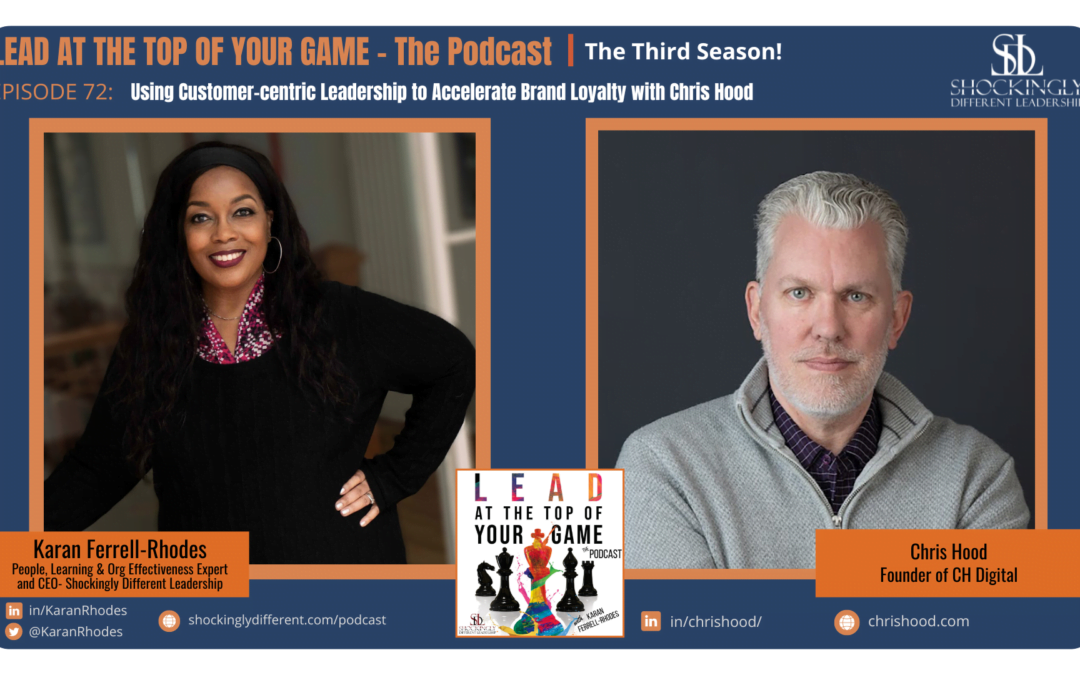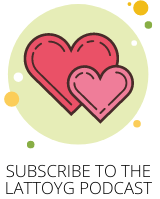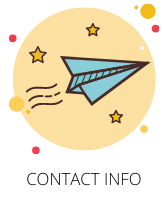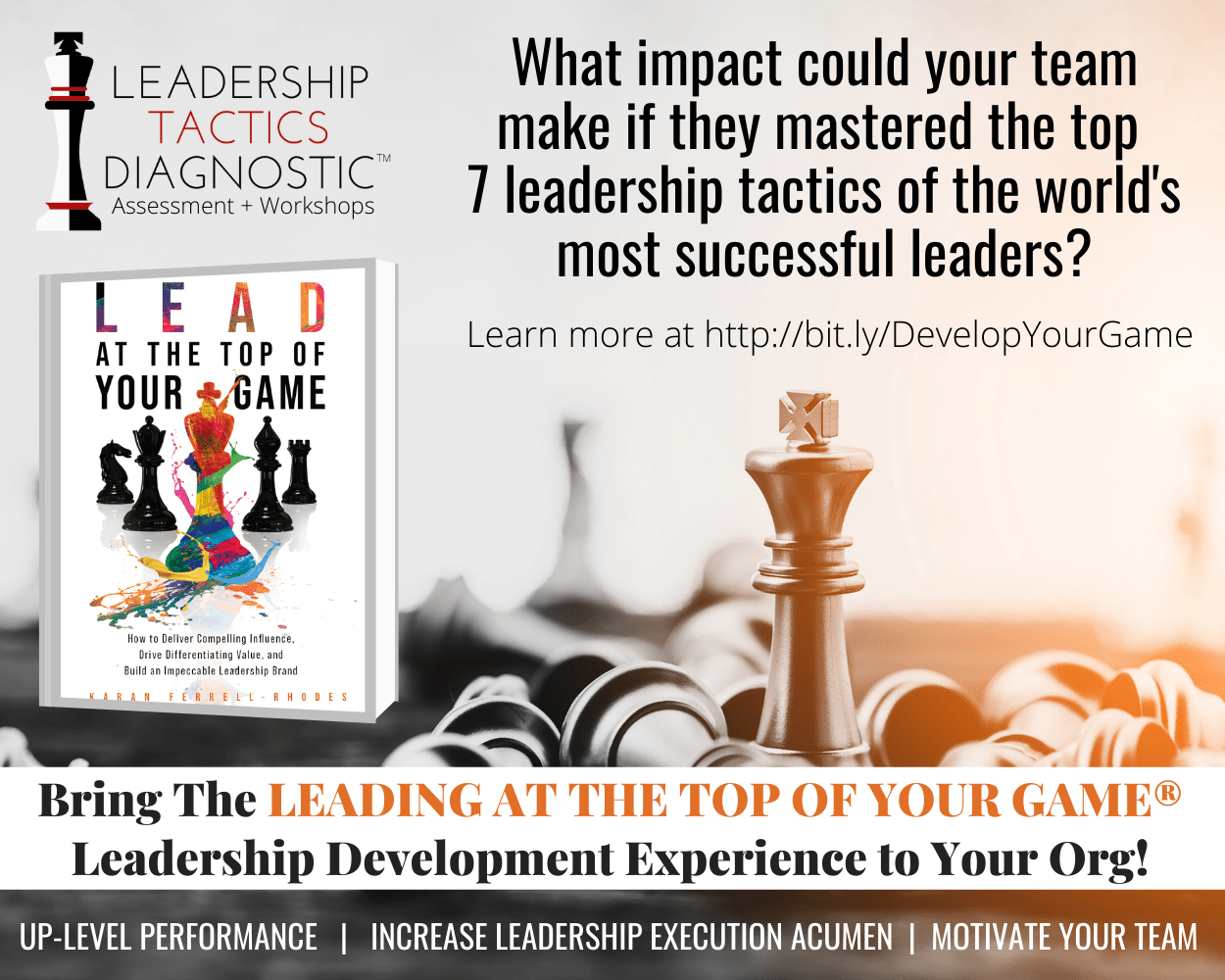IN THIS EPISODE, KARAN FERRELL-RHODES INTERVIEWS CHRIS HOOD
In customer-centric leadership, every decision echoes customer desires, and every strategic move is a testament to their satisfaction. Here, brand loyalty isn’t merely a target; it naturally blossoms as a result. In this episode, we delve into how this transformative approach not only fosters loyalty but also propels brands to unprecedented heights of success.
Chris Hood is a prominent figure with over 35 years experience in fostering customer-centric environments by seamlessly merging customer success with digital strategy. His expertise is underscored by his acclaimed book, Customer Transformation, which earned him a place among the Top 30 Customer Experience Gurus in 2024.
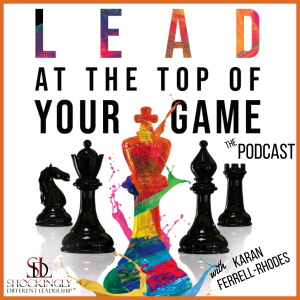
Posted by
SDL Media Team
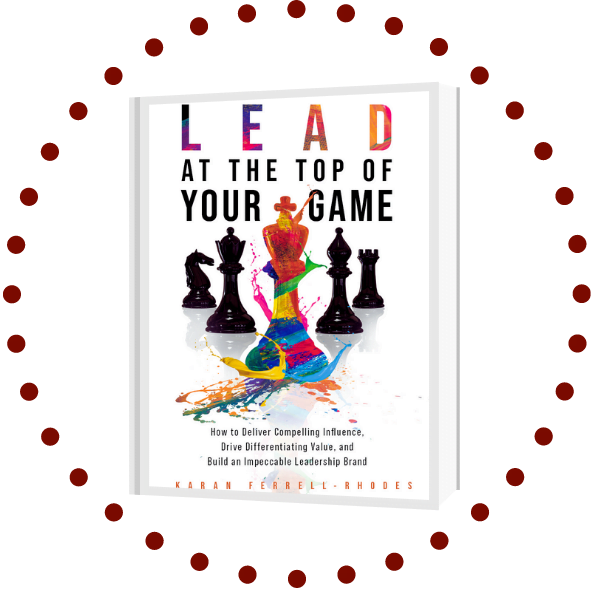
Rather view our video podcast?
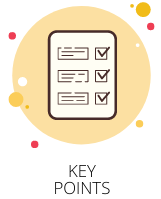
WHAT TO LISTEN FOR:
- What factors contribute to the evolution of customer expectations?
- How can a culture of customer-centricity be promoted across every organizational level?
- What is the impact of employee ideas on organizational success?
- What are the seven stages involved in aligning business value with customer needs?
- How does customer-centric growth facilitate the transformation of organizations for success at each stage?
- What is the significance of customer experience in driving business success?
“Every area of your business or organization should be thinking about the customer.”
FEATURED TIMESTAMPS:
[06:55] From Movie Theaters to Digital Frontiers
[09:55] Evolution of Customer Expectations
[12:07] Fostering a Culture of Customer Centricity Across Every Organizational Level
[17:27] The Impact of Employee Ideas on Organizational Success
[21:35] Signature Segment: Chris’ entry into the LATTOYG Playbook: A Seven-Stage Strategy for Aligning Business Value with Customer Needs
[27:59] Customer-Centric Growth: Transforming Organizations for Success in Every Stage
[29:56] Power of Customer Experience in Driving Business Success
[33:08] Signature Segment: Tanya‘s LATTOYG Tactics of Choice: Leading with Strategic Decision Making
[38:37] Signature Segment: Karan’s Take
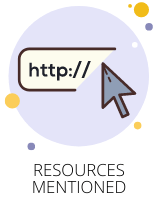
ABOUT CHRIS HOOD:
Chris Hood, an esteemed keynote speaker and strategist, has emerged as a key figure in integrating customer success with digital strategy. With over thirty years of experience fostering business growth, Chris’s innovative approach has cemented his status as a leader in cultivating customer-centric environments. As the author of ‘Customer Transformation’ and an upcoming book on Customer Aspirations, he provides invaluable insights into aligning businesses with the changing demands of their clientele. Recognized as one of the Top 30 Customer Experience Gurus by Global Gurus in 2024, Chris’s expertise spans his tenure at Google, where he spearheaded digital strategy initiatives within the Customer Success division and his groundbreaking work in narrative technologies at Fox & Disney.
In 2024, Chris continues pushing boundaries with his Fractional Chief Customer Officer practice, which is dedicated to reshaping organizations into customer-focused entities. His contributions to ‘The Chris Hood Digital Show’ and advisory roles for innovative companies in the Gaming and AI sectors further highlight his impact on driving digital innovation and customer alignment across diverse industries. Additionally, Chris shares his wealth of knowledge with Southern New Hampshire University students, emphasizing the pivotal intersection of business strategies and technology for achieving customer-centric success.
LINKS FOR CHRIS:
- LinkedIn: linkedin.com/in/chrishood
- Twitter: twitter.com/chrishood1
- Facebook: facebook.com/chrishood.fb
- Instagram: instagram.com/chrishood.ig
- Youtube: youtube.com/c/chrishood
- Podcast: chrishood.com/show
PEOPLE AND RESOURCES MENTIONED:
Forbes Article: The Power of Customer-centric Leadership
ADDITIONAL RESOURCES FOR YOU:
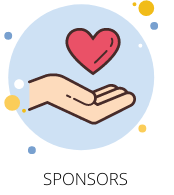
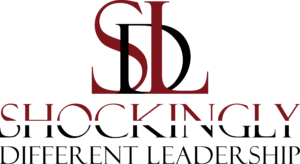
Episode Sponsor
This podcast episode is sponsored by Shockingly Different Leadership (SDL), the leader in on-demand People, Talent Development & Organizational Effectiveness professional services that up-level leader capability and optimize workforces to do their best work.
SDL is the go-to firm companies trust when needing to:
- supplement their in-house HR teams with contract or interim HR experts
- implement leadership development programs that demonstrate an immediate ROI and impact on the business

Click the plus button on the tab to access the written transcript:
Episode 72 | Using Customer-centric Leadership to Accelerate Brand Loyalty with Chris Hood
Chris Hood 00:00
As consumers, our belief system and the way we look at engaging with companies has changed. And that’s going to continue to change. And we have to understand how to make and fulfill those expectations. Because again, I think to your point, the consumer is going to continue to expect more.
Voiceover 00:25
Welcome to the “Lead at the Top of Your Game” podcast, where we equip you to more effectively lead your seat at any employer, business, or industry in which you choose to play. Each week, we help you sharpen your leadership acumen by cracking open the playbooks of dynamic leaders who are doing big things in their professional endeavors. And now, your host, leadership tactics, and organizational development expert, Karan Ferrell-Rhodes.
Karan Rhodes 01:00
Welcome back, everyone, and thanks for joining another episode designed to help you better lead at the top of your game. As you know for season three each month we’re featuring leaders who have interesting roles and a particular profession or industry. And today’s episode is part of our special series featuring leaders navigating the digital world. On today’s show, we’re featuring an expert who uses a seven step model to help companies with their customer transformation efforts. And we’re so thrilled to have on the show Chris Hood is the founder of CH digital, host of the Chris Hood digital show and the former head of business innovation and digital strategy at Google. Chris is an amazing thought leader on combining digital interventions with an obsession on customer transformation strategies in order to ensure business value. Not only will you learn a ton about this topic, but it was so fun to hear Chris and I share our deep love of movies. Now also remember to stay tuned for just two minutes after the episode to listen to my closing segment, call Karan’s Take where I share a tip on how to use insights from the episode to further sharpen your leadership acumen. And now enjoy the show. Hey, they’re superstars. Welcome to another episode of the leader, the top of your game podcast. We are so pleased and honored to have on today’s show, Chris Hood, who is the founder of CH digital host of the Chris Hood digital show, former head of business innovation and strategy at Google and current thought leader on customer transformation who also wrote a book by the same name. He’s a very sought after consultant on customer innovation and transition and he consults with companies across the globe. So we’re so honored to have you Chris to the show today.
Chris Hood 02:53
Awesome. Thank you so much.
Karan Rhodes 02:56
Well, we want to delve deep into your book and what you do in your business. But before we do that, Chris, just for as much as you feel comfortable. Would you mind giving us a sneak peek into your personal life and passions?
Chris Hood 03:13
Personal life? I have no personal life.
Karan Rhodes 03:17
Sure, yeah.
Chris Hood 03:18
We’re too busy! We’re leaders doing things
Karan Rhodes 03:21
That’s right!
Chris Hood 03:21
No, you know, my personal life, what I do hobbies, I’ve watched a lot of movies, not so much TV or movies and a lot of time just escaping into those types of worlds. In my free time I just finished writing a book and publishing it and we’ll get into that but I’m actually already trying to put the finishing touches on another book but this one is is a fantasy fiction, which I have a big passion for obviously with my background and movies and entertainment. So yeah, I like to cook I baked some nice fresh chocolate chip cookies yesterday so they’re down in the kitchen waiting to be done. Wow. Yeah, I just do a little bit of things here and there and mostly I spend a lot of time working and talking with companies and podcasting and writing. Really what’s great is all of my personal hobbies and passions are the things that I do for work. So the blend of those two things are really convenient for me
Karan Rhodes 04:23
Oh, I love that I mean I think you and I are sisters and brothers from another mother because this is say with me I love the people side of business I can talk HR and or leadership all day and you know merges together and then the the other similar fact that we have together I am a movie fanatic myself. I dream. One day event a movie critic and a sommelier. So I have goals for my next chapter in life, but you will have to share some favorite movies at some point
Chris Hood 04:59
We’ll use movie references throughout the conversation today.
Karan Rhodes 05:02
Let’s do it! I’m game I can go toe to toe it. Yeah. Well, let’s start with what just to start us out what is just your, what are your favorite movies? The two man
Chris Hood 05:14
G said that last a long time. I mean starting obviously with some of the classics you can’t pass up Casa Blanca Humphrey Bogart, one of my favorites. You know, I’m actually a big fan of The Wizard of Oz. And of course, not just from the storyline in the music and acting, but some of the incredible technologies that they invented to produce. The Wizard of Oz is just fascinating. More recently, the Shawshank Redemption is up there in the top of my list. You chair is probably one of my favorites of all times, of course, we get into sci fi and then their Star Wars. I can’t not mention that. So yeah. And then I guess, really recently would be like the John Wick series from an action perspective. I love so yeah, I’m all over the board. Singing in the Rain if we go back to the classics. Yeah, I talk about this for a long time.
Karan Rhodes 06:14
I could with you. My I would say one of my favorites is definitely Shawshank that was what I was going to share with you. And I actually do love the Godfather series. And I also love documentaries. There’s some fascinating ones out there as well. So alright, well, you got us warm that with those. But you’re right, some of the classics you can’t beat as well. So all right, well, let’s delve right in, uh, Chris, and we’d love for you to share a little bit about kind of your career in and how you got to be into digital transformation. And how did you end up tying that into the customer experience?
Chris Hood 06:55
Yeah, well, I go all the way back, one of my first jobs will keep it on theme was working at a movie theater, I started off by sweeping the floors of auditoriums and selling popcorn and ticket taking tickets at the front of the of the, at the front of the theater. And I just loved movies. I was like you, I thought one day I would either be in front of the camera or behind the camera, I’d be writing movies, I’d be directing movies, I had it all mapped out. And I got into college and I had to make a decision, like, what am I going to do to actually have a career. And I boiled down to really two options, I could either go into computers, or I could go into the film industry. And so I picked the logical choice at the time, which was go into the film industry. Because back in the 80s, there was really no such thing as computer jobs. They were just now you know, at the very beginning, most of the computer jobs at that time was either working for Microsoft or NASA. So and I movies were was where I was at when we got into around the 2000s, we clearly began to see this convergence of entertainment, through dot coms through the internet, and technology, every business out there needed a website and every website needed to be attractive and entertaining and, and have positive experiences. And so I began to really build a career helping companies understand how to bridge the gap between the business components and the technology components. And then as we move forward, I spent six years at Google, helping customers really understand how to build these experiences that were meaningful and impactful and could attract new consumers to their businesses. And all the way up to now recently where I’ve written a book called customer transformation, which is all along that premise that as we as consumers continue to evolve ourselves, and use new technologies and the way we engage with our favorite companies, that is going to continuously change. And businesses are going to have to learn how to keep up with that ever evolving change. And if they can do it and do it with a customer centric understanding, they’re going to be more successful than those companies that just go and forget to bridge that gap.
Karan Rhodes 09:32
That makes a lot of sense, I’m assuming and please throw tomatoes at me if I’m wrong. I’m assuming that your value proposition of what you’re doing now is a lot easier than it was 15 years ago. Is that true or not true? Because the consumer is more educated now. I mean, the business consumer leaders within corporations. Yes, no, maybe
Chris Hood 09:55
it’s an interesting conversation or a question because if we think about it actually I talk about this a little bit where I’m sure we’ve all heard the sentence, the phrase, the customer’s always right. And, you know, I think if we were to go back 2030 years, the belief around that was much stronger day, there’s a lot of nuances to that, we know that the customer is not always right, or even rational or reasonable. But they also know that if we don’t have the customer, we really don’t have a business. So we have to be able to deliver to them in some way. And I do you think you’re right, the consumers are becoming a lot more aware, a lot more familiar with, again, technologies, our expectations are definitely higher. If you walk into a grocery store, you have a flat out belief that you’re going to be able to buy your groceries with your debit card, you know, so if you walked into a grocery store, and they said, Oh, we don’t take debit cards, you’re gonna go to a different grocery store. Right? Right. And that type of technology that is impacting us is, is becoming our norm. Amazon is a prime example of our norms are changing, because our belief is, is I should be able to order anything online and have it delivered to me next day. That’s, that’s because Amazon has made that a reality. So as consumers, our belief system, and the way we look at engaging with companies has changed. And that’s going to continue to change. And we have to understand how to make and fulfill those expectations. Because again, I think, to your point, the consumer is going to continue to expect more.
Karan Rhodes 11:46
Yes. Oh, gosh, I have so many questions. Where do I even start? So why don’t you do this…Why don’t you share a little bit about the areas in the book that you focus on when you talk about customer transformation? Like what what are the areas of focus that we should keep in mind?
Chris Hood 12:07
Yeah, so the areas of focus is, every area of your business or organization should be thinking about the customer. Now, that’s a broad statement, right? Because what we usually see is, you’ll have a customer support team will obviously they’re focused on the customer, you’ll have a sales team, clearly they’re focused on the customer. Yeah, even a marketing team mostly is focused on the customer. But as we start to move throughout the organization, and we get into like your technology teams, most technology teams are not thinking about the customer. Even when we get to leadership, most leaders, and we’re seeing this today, and there’s several examples of this out there. Most leaders are not thinking about the customer. And then we get into human resources, which is primary, only thinking about their employees, you know, they’re not thinking about the customer, product development is balanced. You know, sometimes they’re thinking about the customer in terms of what their product is. And other times they’re thinking about, well, how are we going to build this and dealing with, you know, that cycle internally, what customer transformation is actually trying to establish is that the customer has to be the focus of every goal you have across every organization within the organization. So if we think about technology, because this is probably the easiest one to explain, if you’re going to bring in a new piece of technology, or introduce technology, just as we were talking about customer needs are changing. So you have to be able to keep up with those changes. But if you’re bringing in a technology just for the sake of bringing it in, and you can’t align that technology decision back to consumer needs expectations or request, but why are you doing it? And again, too many technology departments out there are solely focused on Well, I want to play with this technology, and I want to bring this technology and and this sounds cool. Right? But how is it going to help the customer? And that’s how we have to think about it again, across the entire organization.
Karan Rhodes 14:21
You know, I can definitely see that. And, you know, quite selfishly, you know, I’ve been in the, you know, World of HR and leadership development my entire career. But it’s interesting for me personally, it was always trying to help the employee or the leader do their job to better help the customer but to your point, not everybody thinks about it with that lens. And I can only imagine the magic that occurs for organizations who assimilate that into their culture, that new focus, it would drive a lot of different decisions and behavior. Yes?
Chris Hood 14:59
Well, absolutely. OB, I mean, if we start to really break down the Human Resources element of it and building teams and bringing people in, if your primary mission within the organization, if the thing that you are wrapped around is a customer centric approach, then you would be hiring employees that are going to help foster that customer centric culture, right? And then when you think about how do you support those employees in your organization? Well, how many times you will probably be able to answer this better than I can. But how many times do you hear an employee say, Well, you know, I had a great idea. And I shared it with my manager, but he said, Well, that’s not your job. So don’t think about it, don’t worry about Yeah, it’s somebody else’s responsibility, or the conversation of like, well just stay in your lane, right? When we force our employees to stay within a lane, and we don’t empower them, to be able to develop ideas that are going to benefit the customer, then we are, you know, jeopardizing the business, the culture of the organization. And then one other quick kind of thought in this is businesses spend a lot of time focused on what we call customer satisfaction, if we overly simplified it. Yeah, there’s what we call a CSAT score, it’s an actual score a metric by which we’re gauging customer satisfaction. Does your organization have an employee satisfaction? Or are you leveraging the exact same statistics to to validate customer satisfaction with your employee satisfaction, there’s a direct parallel there, which again, most organizations are not engaged in.
Karan Rhodes 16:45
I can absolutely see the alignment between the two, because we will use to try to, you know, do that through, you know, various measuring, you know, organizational health surveys or feedback, you know, different types of types of employee feedback mechanisms. But you’re right, that same focus needs to happen with employees. But to your point, I do think questions need to be infused about how much of your job or how well, you’re doing in being customer focus at the end of the day, that should be rewarded just as much, or if not more, than some of the, you know, the other things that we measure thoughts on that?
Chris Hood 17:27
Yeah, no, that’s exactly it. I mean, look, there are countless stories out there of individuals. And there’s a steel mill, a steel mill, in, I want to say it’s like in Sweden, or something I can’t remember off the top of my head where where this mill is, right, here’s a steel mill, and they decided to set up a suggestion box, right? Very basic suggestion box, you know, give us your ideas. And any company out there might have a suggestion box, but it’s what you do with it. With those suggestions that matter. For this particular company, they were regularly looking at the suggestions, and one of the stats was like through the suggestions that they implemented from their employees, they saved the company like $11 million, because they actually acted on it. The interesting thing was, was that there was one employee, one employee that provided a new idea every week. And over the course of like, a couple of years, he had like hundreds of ideas that he had put into this suggestion box, right? Well, he was recognized and rewarded for that effort. Because you know, he’s trying to make the the services and the product and the abilities for the organization to deliver to the customer more impactful. And like you said, to your point, if you’re not thinking about it in that way, then it just, you know, let’s just go about our business, what’s in front of us, here’s the task for today. Let’s do that.
Karan Rhodes 18:58
And to your point about…and I love that case study example that you just shared. What I love about that is they created the space for employees to submit those recommendations. I always when I consult with clients, we always tell them, it’s fantastic to implement leadership development programs or, or other types of training. But if you’re not open and willing to actually act, not that you have to implement everything everybody submits, but actually have a process of what this company did is screen and try to find the most feasible suggestions possible and providing space for thought leadership to work and see if they can be viable. If you don’t provide that space for it, then you’re going to frustrate your employees. So don’t even go down this path if you’re not willing to, you know, also put in the time and effort to review see what’s more feasible are called back with the members and let them know the status of their suggestions. And then, you know, have a process to move from there. Because if you don’t do that there, you’re just going to piss your employees off, right, and they’re going to start looking for greener pastures. At some point, if they’re not feeling seen or heard within their organization.
Chris Hood 20:19
That’s right. No different than if you went into the grocery store. And you can pay by your debit card, and you would leave to go to a different grocery store, right employees are consumers. And if they get frustrated, because you’re not listening to them, they’re going to leave and go to a competitor with their ideas. And then all of a sudden, you’re faced with that problem. Right? Right. And when you talk about this space, it could be a physical space, like a suggestion box, but it’s also a space that, you know, we get into psychological safety, where in your team, you are encouraged to speak up, and you’re not looked down upon for speaking up. And that type of safety within daily cultural communications will also empower ideas to come out.
Karan Rhodes 21:08
Ah! Just perfect. Damn you, I couldn’t have said it better myself, you’re so spot on. Now, we do love Chris to give, you know, specific knowledge and strategies to our audience and listeners. And I know that in your book, you write about a seven stage strategy for customer alignment and increase in business value. Would you mind sharing what those seven are with us?
Chris Hood 21:35
Yeah, we’ll try to go through very fast. So our customers number one, customers number one, like it’s called customer transformation, for a point, right? Right, your customer has to be the focus of every decision that you’re making. That’s what we call the outside in perspective, we get into elements like customer empathy, and design thinking, and a lot of different areas where we understand what the customer goals are, this is not your business goals. These are not like, hey, we want to make more money, or we want to sell this product more, right? And these are the actual problems and solutions that customers are having, and how are you going to address them. That’s stage one. Two is interfaces, interfaces is all about how your customer will interface with your business. Typically, we would call these touch points. Don’t call them touch points anymore, because well, there are people who call them touch points. But I’m going to argue we’re in a multi sensory world, we could tell our home devices with our voice to go look up data, or to build a shopping list or even to place an order. So we’re not touching things anymore. We do touch things on our mobile devices where we can connect to our phones and tablets and go make a purchase or engage with a company. But we’ve got hearing, we’re listening to a podcast right now. And learning. We’ve got again, voice, we’ve got sight and sound with virtual reality and augmented reality that is upon us. Artificial Intelligence is now becoming a touch point, right? There is a scientist and in Tokyo that has built what is called Taste TV, where you could actually go and lick the screen of the television and taste what’s on the screen. Right
Karan Rhodes 23:25
Wow.
Chris Hood 23:25
Again, the way we are interfacing is evolving. So that’s interfaces, number two, number three is journeys. So this is where we actually get into our customer experience and our customer journeys. Understand that that is third, a lot of businesses want to start there. What is the experience we’re trying to build? My analogy on? This is like, let’s say we’re hungry. And let’s say we go to the movie theater, and we want to go watch a movie. Well, what are we going to see? Right? First we decide we want to go we’re bored. That’s my goal. Then we decide what are we going to go see? And where are we going to go see it? Are we going to watch it on Netflix? Are we going to go to the movie theater? Are we going to, you know, go to our friend’s house? Are we going to watch on YouTube, like that’s the interface experience is you and I sitting down and having some popcorn and watching a movie and laughing That’s the experience in the journey. So that’s stage three. That’s what how we get there. Gotcha. Ah four is the ecosystem. This is all about community development and community innovation. Embracing your community as and your customers as part of the process. It also is where you build partnerships. So being able to build a partnership between two different brands to come together to create connected journeys that they might have. A great example of this is you know, if you’re going on a business trip, and you’re gonna go on a plane and then you’re gonna get to a hotel and somewhere in between, you’re also probably going to take a taxi or Uber. You got three different platform forms there. But for you, it’s one single journey, it’s one single experience, you’re going on a business trip.
Karan Rhodes 25:06
Right.
Chris Hood 25:07
So the system allows you to bridge the gap between those activities. Number four, is the culture. And we just talked a little bit about the culture is embracing that within your organization, I outline this concept of a culture of praise, praise is all about recognition to your employees, while also maintaining a purpose for your organization, purpose being your customers. And then six is going to be technology. So we eventually reached technology, it’s towards the end, that’s another thing. That’s because technology is going to be an enabler for all of this. And if we kind of reversed this, and we took that inside out, you know, perspective as a as opposed to customer first, then what we’re doing is we’re saying, Hey, we’re going to build this technology. And then we’re going to figure out how our employees are going to use it, and how we’re going to introduce it into the ecosystem. And then what the experience is, we’re working backwards, right way. Too many companies say we’re going to build a technology, and then we’ll figure out how the customers are going to use it. Yeah, why you’re wasting money and time, we get to technology. And then the final one is business. And this is where our values come in, where we generate revenue. Obviously, if you completed all six steps leading up to this, this is where you’re going to be most successful. This is also where we get into leadership, and understanding how leadership is impactful for a customer centric approach, and how we get to what we call Customer Value alignment. This is about aligning not only the values of the organization with your employees and teams and technology, but also ensuring that you are aligned with what the customers values and expectations are. And this is very tricky, because again, we have seen countless examples of this right now happening this year, where company’s values are not aligned with consumer values, and those companies start to go out of business. So really critical to have that in place. And there you go, those are the seven core steps of customer transformation.
Karan Rhodes 27:19
Okay, I’m going out after this podcast and get your book already, because we’re short on time. But I want to delve deep into each one of these. Now, a question for you, Chris, when you’re brought into organizations, are you brought in to help improve the customer focus on existing product and service lines that the org The company has? And or are you brought in at the when it’s brand new, and they’re needing to map out the journey and make sure everybody’s, you know, focused on the customer throughout the development process?
Chris Hood 27:58
Yeah, all of it. So the reality is, is there’s organizations out there that are very strong in one or two of these areas, and maybe not strong in another area. So for example, I may come in and only focus on the ecosystem part for you, and try to help you understand how to build that ecosystem, and bridge the gap between your customer and your business. That’s why ecosystem is right in the middle. In other cases, they might need help at the very beginning, like, you know, we don’t have processes in place to really recognize and understand what the customer goals are, or from a technology perspective, we have technology, but we really aren’t looking at it from a customer centric perspective. So I can come in and focus on one area or two areas or the whole thing, it really depends on what that organization needs.
Karan Rhodes 28:52
Gotcha. I’m just, you know, it was things were spinning in my mind, because, you know, one of our divisions that shockingly, different leadership is focused on private equity backed companies, and you know, the high growth firms, and a lot of them still struggle. And they’re high growth, they’re doing great. But they just got in and created, right, there’s a lot of entrepreneurs do, they hadn’t gone through this kind of formalized thought process around their service and product offerings. And it sounds like it would be a fantastic exercise to do that with them as they you know, prep for the next stage of growth that, that that, you know, I do want you to you are already a very sought after already. But I just see so many possibilities for you and your team to you know, dramatically impact the way businesses think about their customers and how that ties to their ultimate metrics of success. It’s just fantastic what you’re doing. Just amazing. Just absolutely amazing.
Chris Hood 29:56
No, the reason I wrote the book was because I could See that? Again, there’s lots of organizations struggling with this right now. And we see, again, we are all consumers. We’re we are consumers. And we know that even our own experiences, how we engage with companies is shifting. Look, I just tried to order pizza hut a couple of nights ago. And anybody who’s listening who works for Pizza Hut, please call me because I can help you drastically here. I was trying to order a pizza on Pizza Hut. And I kept getting an error message. And it got so frustrating that what did I do, I left and went to Domino’s. Now, this seems so simple and so basic. And yet, we as consumers are getting more intelligent, more savvy, more tech, you know, expectations are higher, I have a belief system that I should be able to log into Pizza Hut, order my pizza, and it’s going to get delivered. And when that doesn’t happen, we are quick, very quick, to get bridged and move on. Yes, right. And so we have to, because we have to put ourselves as consumers into that spotlight, even in our jobs. I walked into companies before and I said, you know, the ones coming to mind is like, oh, you know, we’re a bank, right? And I asked the room. Okay, so you all work for a bank? How many of you have a checking account for the bank you work for? Like, only half of them do? Know, why is that? Like? You’re using your competitors? Why? Well, if you were to dive into it, I’m sure that there are certain frustrations in that mix. Or maybe it’s you know, it’s been a long term, like, they’ve had the account for 20 years. And then they just recently got the job. Like, there’s some there’s some analysis to do in there. But ultimately, you’re saying, Okay, well, you understand the frustration, because you’re already a customer of the frustration, you got to solve it. Right? And they can’t they, they have to stop for a second and say, Oh, I’ve never thought about it like that.
Karan Rhodes 32:12
When they should have a long time ago. I mean, they’re missing, you know, their Prime customers right there. So now I’m gonna say, Chris, it makes sense. You know, as you know, we always love to ask our guests, which of our tactics that I write about in my book on leadership execution really resonated, and you were so kind enough to share that leading with strategic decision making really resonated with you. And for my newer listeners, leading with strategic decision making, it’s just that it’s like making good decisions yourself, or lead in a good decision making process with your team or colleagues. And looking at the seven step strategy, each one of these requires a very conscious and strategic decision to do the right thing for your customer. So it makes a lot of sense. But I’m just curious, in your own words, why does leading with this strategic decision making resonate with you?
Chris Hood 33:08
Well, I will, I will also add to this that I told you, I added an eighth to your list. So let me touch on the strategic decision making. I will say that before I wrote customer transformation, and before I really got into this, this philosophy of of customer first, I’ve always been a strategic leader. And when we think about decision making, there is an added element to that, which also a lot of organizations don’t think about it’s it’s it’s the data, it’s looking at the data to help you with those decisions. And then think about that strategically long term. The book is a strategy, the whole book is a seven stage strategy. So I’m very strategically focused, and in pretty much a lot of things that I do. However, in the book, I write a whole chapter on what we call obsessed leadership. Now, obsessed leadership is really around what we’re talking about here. It’s making sure that the customer is first. And there’s a leadership style called customers obsessed leadership, which is, again, it’s taking the context of what we’ve already talked about in my book, and then executing on it. That, sure there’s elements of strategy when you’re thinking about your consumer. Sure, there’s areas of, of being presence, right. All of the other areas of leadership that you’ve outlined before, are parts of what makes a good leader, you know, a good leader, but most of them again, are focused on the daily operations of an organization driving business. And I’ve been, I give three or four exams. polls in my book about the different leadership styles and why they are not focused on a customer. When you’re focused too heavily on business operations and employee satisfaction and other things that we know, leaders, you know, have to think about, you lose focus of the primary reason you are in business. And we’re seeing this again, in countless areas. And a couple of the case studies that I share, I analyze, like messages like PR messages, or blog posts, or like emails that go out to, you know, their stakeholders. And in a couple of examples, they they talk about all of the things that they’re working on to fix or transform, and none of them talk about the customer. It’s yeah, you know, if crazy, if you’re focused on the customer, all the other things that you’re talking about will get solved. Right? You’re, you’re laying people off, why because your customers are going away, get your country back, then you can hire employees like that, then this seems so obvious. And yet most leaders are so blinded to understanding who their consumers are and what they want. And if you can focus on that and have have an obsession about that, not the leadership style that is going to be successful for you.
Karan Rhodes 36:29
And so is that your eighth one, The Obsessed Leader?
Chris Hood 36:31
Yes, that’s the eight.
Karan Rhodes 36:33
I love it. Okay, I’m going to add that to our list. How about that?
Chris Hood 36:38
Yes. The Obsessed Leader.
Karan Rhodes 36:40
All right, Chris. Well, unfortunately, we’re gonna have to wrap it up. But before we do, you know, of course, we’ll have all of the links and information how to reach you in our show notes, but I always love to give guests a voice to to let us know where to find you yourself. So can you share how the listeners can reach out to you?
Chris Hood 37:00
Yeah, absolutely. The easiest way to get to me is by my website, Chrishood.com. So C H R I S H. O O D.com. And on my website, I have links for my book customer transformation. I have links to my podcast, the Chriss Hood digital show, my blog articles, my social media profiles, everything you want to do to reach out to me is there on my website. chrishood.com.
Karan Rhodes 37:26
Awesome. Thank you so much, Chris. And I just want to let you know that we are just over the moon for your gift of time. This these great points of wisdom will add these to our elite what we call our leadership playbook as additional areas of focus that leaders need to make sure that they take into account along with links to your book and your consulting your in your website. So thanks so much for your time on the show.
Chris Hood 37:56
Thank you as well.
Karan Rhodes 37:57
And thank you to listeners for tuning in to another episode of the Lead at the Top of Your Game podcast. Please make sure that you like and subscribe and share with just one friend because that helps us extend our reach to help friends just like you to lead at the top of their game. See you next week. Well, I hope you enjoyed our conversation today with Chris Hood, founder of CH digital links to his bio his entry into our leadership playbook and additional resources can be found in the show notes, both on your favorite podcast platform of choice and on the web at lead your game podcast.com. And now for Karen’s take on today’s topic of customer centric leadership, a customer centric leader exists to mobilize others to execute the business strategy and deliver results in a way which creates value over a customer’s lifetime value is created by engaging with each customer as an individual, like where they want when they want and how they want, which you know is no small feat if you’ve ever tried it. To do this effectively means changing your systems and processes and capabilities and maybe even mindset but ultimately it also involves changing the company culture. Now while customers Centricity starts in the heads of executives many times it is their behavior that ultimately leads to whether the transformation is successful or not. And since customer centric leadership behavior acts as a catalyst to the wider organization, on whether they’re going to be engaged or not, it’s important that I wanted to share four drivers that help leaders move their customer sis centric visions and plans out of the clouds and into everyday business. So the first driver is customer centric leaders provide direction and purpose and must be based in reality, meaning their thoughts must be based in reality. The reality test is critical, you know, because many leaders assume that their plans are appropriate for their customers and global markets without really diving into real data or research. And that’s a big no, that’s my second driver is that customer centric leaders understand that their employees are also their customers. The easy part is creating a rational and clear pant plan of action. The hard part is mobilizing an entire organization toward that vision. Your entire organization must believe that they’re headed in the right direction, that they are driven by the overall purpose of customer centricity. And they want to go on the journey with you. So when they are willing to give their discretionary time and effort to make things happen, then you know that you’ve created a tipping point where you have won them over and they’re really passionate about the effort. The third tip I wanted to share is that customer centric leaders drive disciplined execution. Leadership is not a one time activity. As you all know, ladies and gentlemen, it’s an ongoing effort of engagement. And leaders must mobilize others on following through on the plan, and have the ability to create a culture of accountability to ensure that customer centricity lives at all levels of the organization. And then lastly, customer centric leaders understand that this intervention and this shift in mindset is not a one time thing or just a project. It’s a long term initiative. Like all organizations, there’s going to always be a next challenge that the leader must embrace. But if the focus is taken away from customer centricity, then the likelihood that the effort will be success is very, very small. At best, it’s going to slow down, and at worst is going to die. A major mistake that leaders make is to assume that once all the plans have been developed and cascaded that their work is done, and they’re off to the next shiny object of leadership focus. And that just can’t be the case. Sustaining momentum, for the long term requires leaders to constantly be seen and heard, expressing a genuine sense of urgency, commitment, and passion. Well, that’s all for today. Ladies and gentlemen, please remember to subscribe to the podcast and share with just one friend. Because remember, by doing so you will empower them to also lead at the top of their game. Thanks so much for listening and see you next week. And that’s our show for today. Thank you for listening to the lead at the top of your game podcast, where we help you lead your seat at any employer, business, or industry in which you choose to play. You can check out the show notes, additional episodes, and bonus resources, and also submit guest recommendations on our website at leadyourgamepodcast.com. You can follow me on Twitter, Facebook, Instagram, and LinkedIn by searching for the name Karan Rhodes with Karan being spelled K a r a n. And if you like the show, the greatest gift you can give would be to subscribe and leave a rating on your podcast platform of choice. This podcast has been a production of Shockingly Different Leadership, a global consultancy which helps organizations execute their people, talent development, and organizational effectiveness initiatives on an on-demand, project, or contract basis. Huge thanks to our production and editing team for a job well done. Goodbye for now.

Want to be a LATTOYG Podcast Guest?

Want Karan to be Your Podcast Guest?

Want to be a Podcast Sponsor/Advertiser?
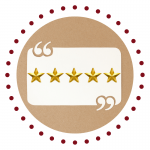
Like the Show? Please Leave a Review
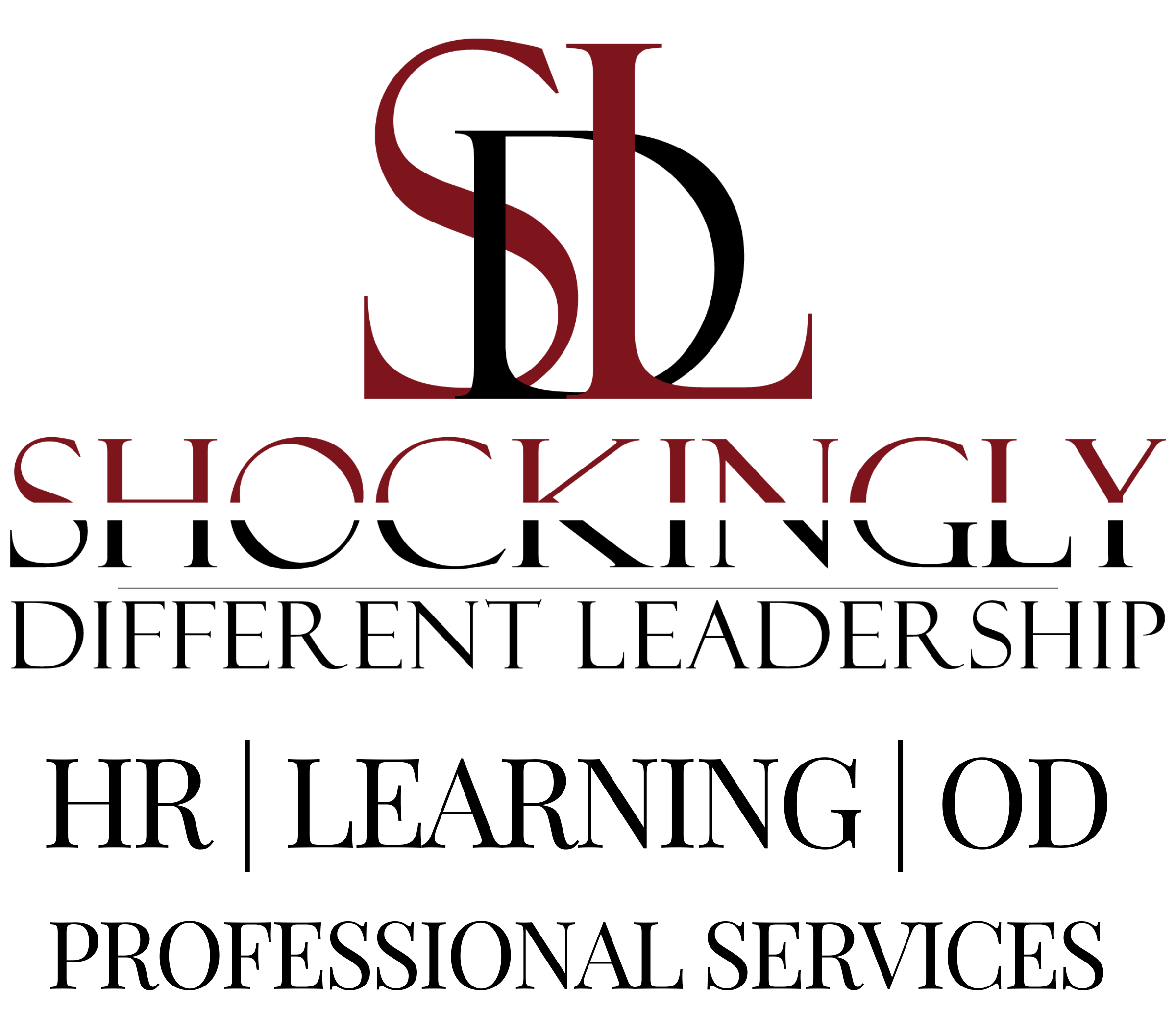
#KeepInTouch
via our podcast alerts
Subscribe now to discover why thousands of monthly listeners who are passionate about doing their best work prioritize time each week to listen to the Lead at the Top of Your Game podcast.
#AboutSDL
Shockingly Different Leadership is a human capital professional services consultancy that provides organizations access to the best consulting expertise in the areas of Talent Development, Organizational Development, and Human Resources – on an on-demand, project, or contract basis.
#WhereToFindUs
MAILING
4480-H South Cobb Drive
PMB 219
Smyrna, GA 30080
PHYSICAL
2121 NewMarket Parkway
Ste. 108
Marietta, GA 30067
#ContactOptions
Customer Service Email:
service@shockinglydifferent.com
Call or Text:
770-384-1103
#Office Hours
MON-FRI
8:30 AM – 6:30 PM
Weekends By Appointment

